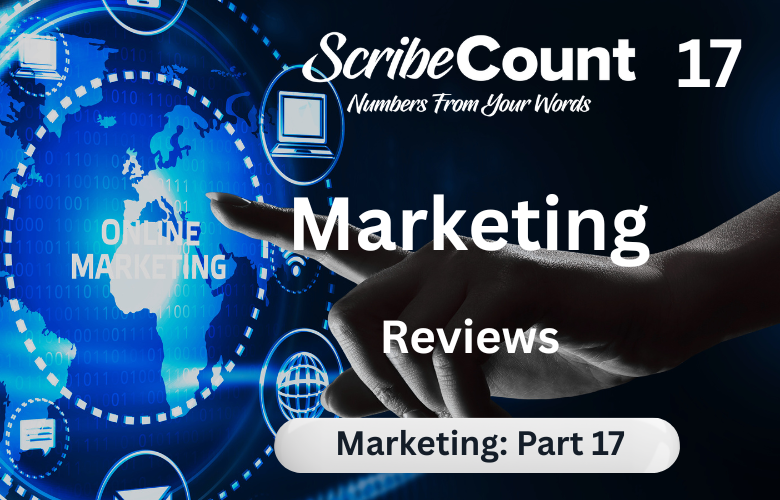How to Get and Use Reviews for Indie Authors
For indie authors, reviews are more than just accolades—they are currency. In the crowded world of self-publishing, a book’s reviews influence everything from discoverability and credibility to conversion and long-term readership. Reviews not only help authors reach new readers but also signal to platforms and retailers that a book is worth recommending. Whether organic or obtained through targeted campaigns, reviews are a vital part of an indie author’s business strategy.
In this guide, we’ll explore what reviews are, why they matter, and how authors can ethically and effectively secure them. We’ll also explain how reviews can be repurposed to strengthen marketing efforts, how they fit into broader promotional campaigns, and the tools and platforms that support their acquisition. Finally, we’ll look at the do’s and don’ts of quoting and publishing reviews in alignment with copyright laws.
The Power of Reviews in the Indie Publishing Landscape
A single well-placed review can tip the balance for a hesitant reader. Reviews build trust, signal quality, and offer social proof. For an author just launching a book, they’re one of the few things that can directly impact both immediate sales and long-term reputation. Readers often browse reviews to determine if a book is for them—especially in digital marketplaces where they can’t flip through the pages.
From an algorithmic standpoint, platforms like Amazon, Kobo, and Apple Books all reward books with higher review activity. Reviews influence a book’s visibility in search results and its eligibility for internal recommendation engines. Beyond that, they shape the emotional bond between a reader and a writer. Reviews give your work legitimacy in a world where gatekeepers have been replaced by digital feedback loops.
Understanding Organic vs. Paid Reviews
Organic reviews are those a reader leaves voluntarily after buying or receiving a book. These reviews are considered authentic, and platforms like Amazon explicitly prioritize and protect them. These can be generated through email sequences, reader magnets, direct sales follow-ups, and community engagement.
Paid reviews, on the other hand, are typically obtained through professional review services. These should not be confused with fake or incentivized reviews. Services like Kirkus Reviews or Publishers Weekly BookLife offer editorial reviews from professional reviewers. They disclose the paid nature of the review, and authors can use quotes from them in marketing. However, paid reviews should never be disguised as organic. Platforms like Amazon prohibit compensated reviews that appear user-generated, and violations can result in penalties.
Platforms and Services That Help Secure Reviews
Authors often begin with ARC (advance reader copy) teams. These are groups of readers—usually recruited through an author’s newsletter or social media—who receive early access to a book in exchange for an honest review. Tools like BookFunnel, StoryOrigin, and Booksprout help facilitate this process by managing distribution, tracking review commitments, and handling reader communication.
Beta readers are another key group. While their feedback comes earlier in the publishing process, many beta readers become champions of the book and later leave reviews once the book is live.
Book bloggers and genre-specific influencers also contribute significantly to review campaigns. These individuals often have their own platforms, newsletters, and followings. By building relationships with bloggers who review books in your genre, you can gain valuable exposure and detailed reader insights.
Ethical Use of Reviews in Marketing
Once you’ve gathered reviews, it’s time to integrate them into your marketing. This includes using quotes on your website, in emails, on social media, and in ad graphics. However, it’s important to follow copyright guidelines when quoting reviews. For editorial reviews from paid services, you can generally quote freely (with attribution). For user reviews, you should avoid quoting more than a sentence or two, and always attribute the review correctly. Never edit a review to change its meaning.
Good reviews are most effective when used in context. Instead of creating a generic “Praise” page, weave select quotes into your landing pages, product listings, and book descriptions. Pair them with calls to action or comparative claims (e.g., "Readers of Gillian Flynn will love this psychological thriller!") to provide instant social proof.
Where Reviews Matter Most
Retail product pages are the most obvious and valuable real estate for reviews. On Amazon, a book with 50 or more reviews has greater visibility in search and in “also bought” recommendations. On Kobo and Apple Books, review activity can influence merchandising decisions and promotional eligibility.
Reviews are also essential for pitching your book to bookstores, libraries, and media outlets. A librarian or buyer who sees glowing feedback from readers and professional reviewers is more likely to take a chance on your title. Even on your own website, reader testimonials add emotional depth and validation.
In emails, short excerpts from reviews can break up promotional copy and serve as a subtle nudge for readers to take action. On social media, share reviews as quote graphics, reels, or short clips to keep the content dynamic.
Influencers and the Role They Play
Influencers have emerged as a force in book discovery. From YouTube reviewers ("BookTubers") to Instagram reviewers ("Bookstagrammers") to TikTok influencers ("BookTok"), these creators often have highly engaged audiences in specific genres. A single post from the right influencer can sell hundreds or even thousands of copies.
To leverage influencer reviews, start by identifying accounts that regularly post about your genre. Interact with their content, understand their audience, and build rapport before pitching your book. When you approach them, provide a clear, personalized pitch and offer a free review copy. If they agree to feature your book, ask permission to quote their post in your marketing.
Leveraging ARCs, Beta Readers, and Book Bloggers
An ARC campaign should begin 4–6 weeks before your launch. Use platforms like BookFunnel or StoryOrigin to deliver files and track reviewer progress. Communicate expectations clearly: when you’d like the review, what platforms they should post to, and how they can support the launch.
Beta readers serve a slightly different role. Their feedback is meant to improve the book before publication. However, many beta readers are loyal followers who can be re-engaged during launch. Send them the final version with a thank-you note and ask them to leave a review if they enjoyed the story.
Book bloggers often require a formal request. Provide them with details about the book, your publishing timeline, and a free copy. Most bloggers will post on their own site and cross-post to Amazon or Goodreads. Building a database of blogger contacts in your niche can create a steady pipeline of coverage.
A Sample Review Request
Here’s an example of a simple review request message:
"Hi [Name],
I hope you’re doing well. I wanted to reach out because I think you might enjoy my upcoming thriller, Cold Truth, which launches next month. It’s a suspenseful read with a strong female lead, dark secrets, and a twist ending. I’d love to send you an advance copy in exchange for an honest review. No pressure, of course—but if you're interested, I’ll include a download link below. Thank you for considering it!
Warmly, [Your Name]"
Keep your tone professional, your ask respectful, and make the process simple. Always follow up with gratitude, not demands.
Strategic Timing and Review Integration
Reviews are most effective when they appear early and consistently. Start building your review team months before release. Begin with beta readers, then move to ARC readers. Secure editorial reviews during the pre-order period if possible, and time social media posts and emails to coincide with launch momentum.
Track where reviews are posted and how they impact sales. Create a spreadsheet or use author tools like ScribeCount to analyze engagement and trends. Are certain quotes driving more clicks? Are certain platforms yielding more detailed reviews? Use that data to adjust your future strategy.
Also consider which reviews you feature in paid ads. Choose short, punchy quotes that support the emotional tone or promise of the book. Always test different variations to see what resonates with readers.
Final Thoughts: Reviews as Long-Term Assets
Reviews aren’t just launch-day accessories. They’re ongoing assets that boost sales, build trust, and shape your reputation as an author. Whether earned through genuine reader enthusiasm or requested with care and professionalism, reviews offer social proof that no marketing budget can buy.
Treat them with respect. Never fake them, never buy them dishonestly, and never take them for granted. Instead, create great books, nurture your community, and make it easy for people to support your work. Over time, the accumulation of honest, thoughtful reviews will become one of your most powerful tools—not just to sell books, but to build a sustainable indie author career.

